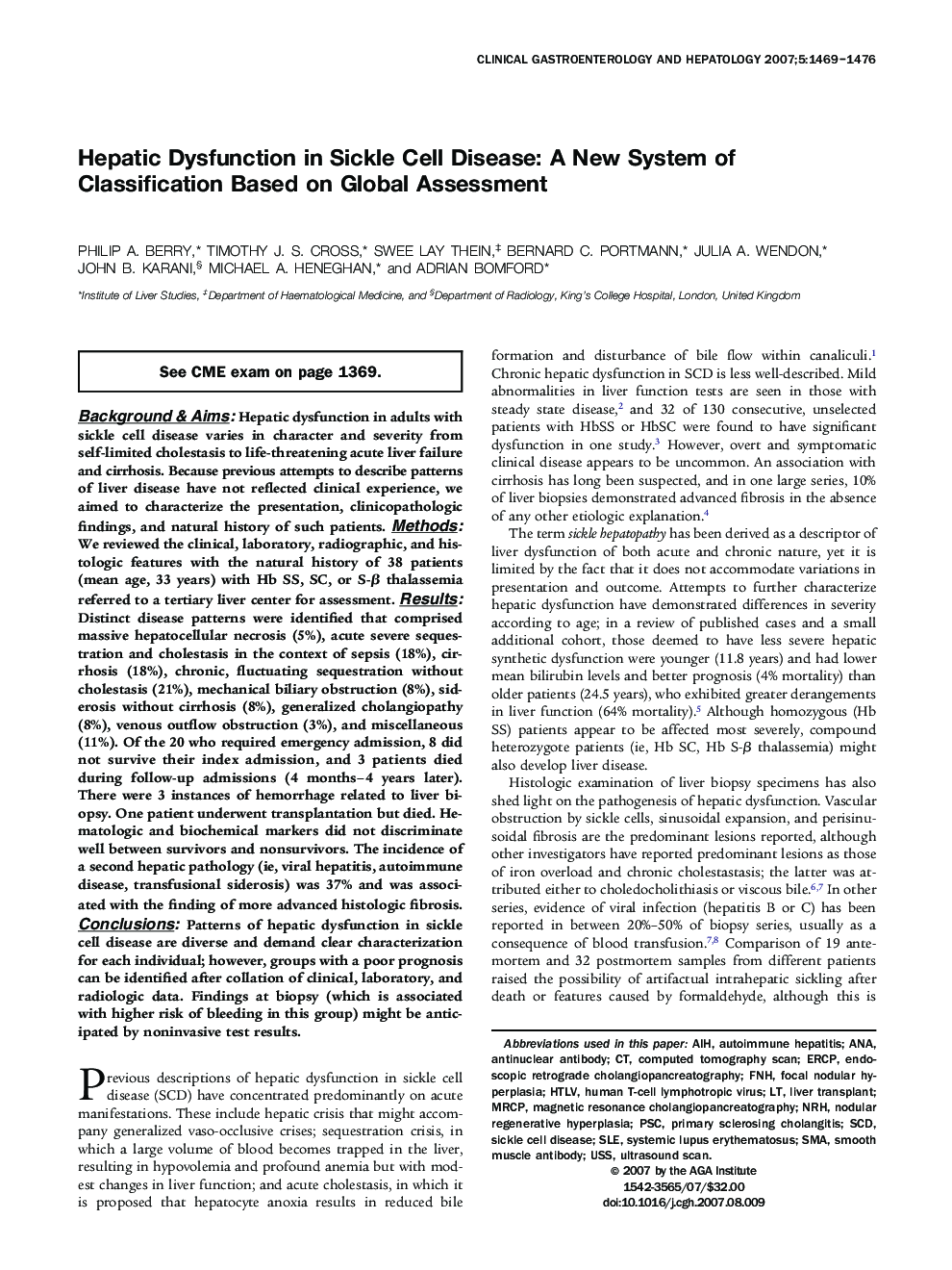| Article ID | Journal | Published Year | Pages | File Type |
|---|---|---|---|---|
| 3285767 | Clinical Gastroenterology and Hepatology | 2007 | 8 Pages |
Abstract
Background & Aims: Hepatic dysfunction in adults with sickle cell disease varies in character and severity from self-limited cholestasis to life-threatening acute liver failure and cirrhosis. Because previous attempts to describe patterns of liver disease have not reflected clinical experience, we aimed to characterize the presentation, clinicopathologic findings, and natural history of such patients. Methods: We reviewed the clinical, laboratory, radiographic, and histologic features with the natural history of 38 patients (mean age, 33 years) with Hb SS, SC, or S-β thalassemia referred to a tertiary liver center for assessment. Results: Distinct disease patterns were identified that comprised massive hepatocellular necrosis (5%), acute severe sequestration and cholestasis in the context of sepsis (18%), cirrhosis (18%), chronic, fluctuating sequestration without cholestasis (21%), mechanical biliary obstruction (8%), siderosis without cirrhosis (8%), generalized cholangiopathy (8%), venous outflow obstruction (3%), and miscellaneous (11%). Of the 20 who required emergency admission, 8 did not survive their index admission, and 3 patients died during follow-up admissions (4 months-4 years later). There were 3 instances of hemorrhage related to liver biopsy. One patient underwent transplantation but died. Hematologic and biochemical markers did not discriminate well between survivors and nonsurvivors. The incidence of a second hepatic pathology (ie, viral hepatitis, autoimmune disease, transfusional siderosis) was 37% and was associated with the finding of more advanced histologic fibrosis. Conclusions: Patterns of hepatic dysfunction in sickle cell disease are diverse and demand clear characterization for each individual; however, groups with a poor prognosis can be identified after collation of clinical, laboratory, and radiologic data. Findings at biopsy (which is associated with higher risk of bleeding in this group) might be anticipated by noninvasive test results.
Keywords
USSSCDPSCFNHHuman T-cell lymphotropic virusMRCPAIHHTLVNRHEndoscopic retrograde cholangiopancreatographyantinuclear antibodysmooth muscle antibodyUltrasound scancomputed tomography scanANASickle cell diseasemagnetic resonance cholangiopancreatographySMASystemic lupus erythematosusSLEAutoimmune hepatitisnodular regenerative hyperplasiaFocal nodular hyperplasiaLiver transplantPrimary sclerosing cholangitisERCP یا endoscopic retrograde cholangiopancreatography
Related Topics
Health Sciences
Medicine and Dentistry
Gastroenterology
Authors
Philip A. Berry, Timothy J.S. Cross, Swee Lay Thein, Bernard C. Portmann, Julia A. Wendon, John B. Karani, Michael A. Heneghan, Adrian Bomford,
